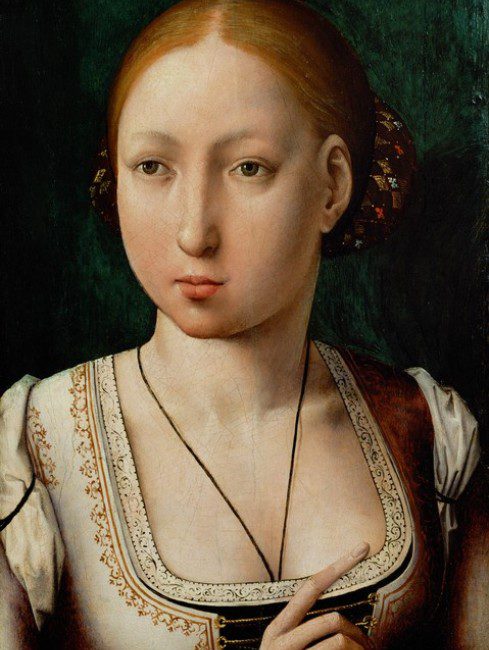On 16th December 1485, Catherine of Aragon, a daughter of Spanish monarchs King Ferdinand II and Queen Isabella of Castile, was born at Alcala de Hernares, near Madrid, the capital of Spain. She was the youngest of the five royal children, the others being Isabella, Juan, Juana, and Maria.
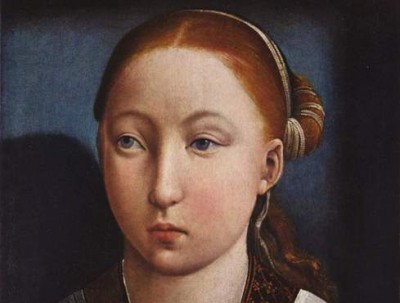
Catherine’s birth wasn’t a typical one for royals, maybe because her parents were the most remarkable royal couple of the age. Isabella, the warrior-Queen of Castile, spent most of her pregnancy on campaign against the Moors instead of being in confinement and waiting for the birth of her child. Only after Isabella was captured at Ronda, she stopped being on the front and retired to Cordoba and then to Alacala de Henares.
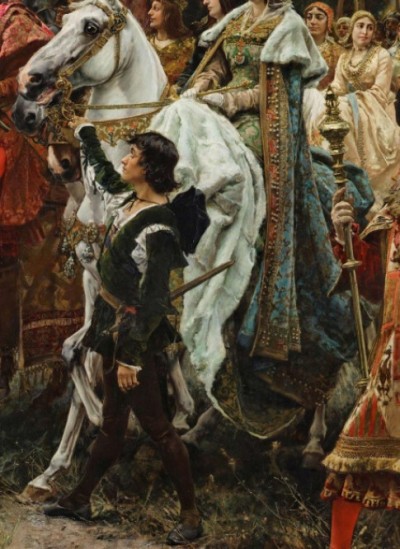
Catherine was descended from the English royal family on her maternal side through her great grandmother Catherine of Lancaster, and her great-great-great-grandfather was John of Gaunt of the House of Lancaster. The baby girl was named after her mother’s English grandmother Catherine, and she also took much after the English royal house – reddish golden hair, a fair skin and bright blue eyes.
David Starkey writes in his book “Six Wives: The Queens of Henry VIII”:
“The Englishness of her name and appearance proved prophetic. After a happy, secure childhood, Catherine’s life was to become a series of struggles: to get married, to have a child and, above all, to protect her marriage and her child against her husband’s determination to annul the one and bastardise the other. And the scene of these struggles was England.”
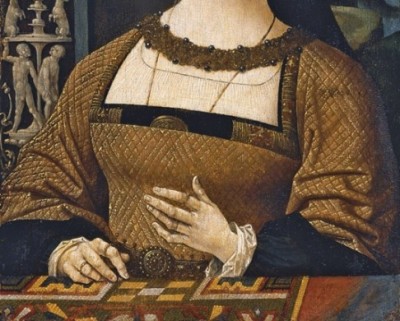
Catherine, together with her sister Joanna, strongly resembled Isabella in many ways. Isabella maintained an austere and pious lifestyle that was also unique and temperate, and her strong piety influenced her throughout her whole life. It was Catherine’s case too: she was her mother’s daughter which she proved during her struggle for her crown, and she was overly pious and religious throughout the whole life. However, there were more in Catherine from Ferdinand of Aragon than it may seem at first glance, both for good and for bad.
Isabella and Ferdinand had five surviving children, and Catherine belonged to a large family. Isabella had seven known pregnancies: she had a son stillborn on 31st May 1475 in Cebreros, and she also had a stillborn daughter, twin of Maria of Aragon, Queen of Portugal, who was born on 1st July 1482. In childhood, Catherine was favoured by her parents among her siblings, and in return she loved and revered them.
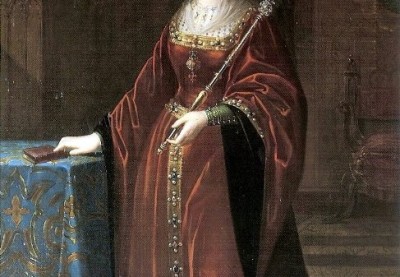
David Starkey writes about Isabella and Ferdinand’s attitude to Catherine:
“Juan, as heir, was the apple of his parents’ eye. But Catherine, as the youngest, was something of a favourite too. Ferdinand proclaimed that he loved her ‘entirely’: ‘for ever’, he explained, ‘she hath loved me better than any of my other children’. For the Queen, actions spoke louder than words, and in 1489, when Catherine was only three, Isabella held her up in public to watch a ceremonial bull-fight.”

Although only three years elapsed since King Henry VII had won the Battle of Bosworth Field, he already started thinking of international political alliances with other powerful monarchs in Europe. At that time, there were two major powers in Europe – France and Spain.
Having an alliance with one of them was highly important for the international recognition of the Tudor dynasty that was still “young” and that had quite a disputable claim to the throne of England as at least six male members of the House of Plantagenet with a better blood claim than Henry VII.

Henry VII entered into betrothal negotiations with Isabella and Ferdinand, who hesitated to give their daughter’s hand in a marriage to the Prince of Wales from the kingdom, where his father could have been deposed every day. However, the political factor – Ferdinand needed England’s help against France – overweighed all other concerns.
The Catholic monarchs decided Catherine’s fate just before her third birthday, agreeing to wed their youngest child to the first-born son of Henry VII and Elizabeth of York – Arthur Tudor, Prince of Wales.
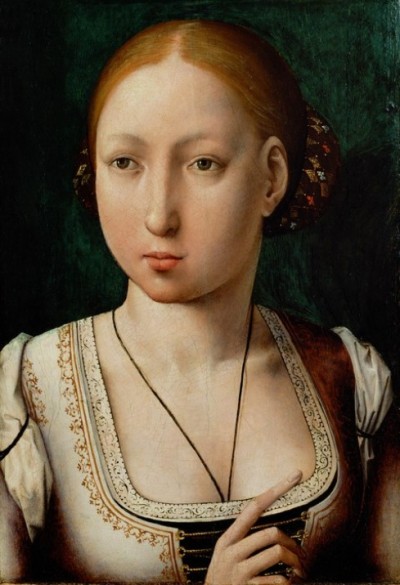
In her book “The Six Wives of Henry VIII”, Alison Weir writes about Catherine’s betrothal to Arthur:
“There was, however, something that Ferdinand desired very much, and that was military assistance against the French. In March 1488, the Spanish ambassador at the English court was Dr Roderigo de Puebla, an unscrupulous diplomat of Jewish origins. Ferdinand had instructed him to offer Henry an infanta for his son in return for an undertaking on Henry’s part to declare war on France. The King of England had reacted enthusiastically to the proposal, and promptly despatched his ambassadors to Spain to view the sovereigns’ youngest daughter, Katherine.
A Spanish herald, Ruy Machado, was moved to comment on the charming impression made on the envoys by both the little girl and her mother, the Queen. At the same time, in England, Henry VII was welcoming Ferdinand’s representatives and enthusiastically showing off his nineteen-month-old son, first dressed in cloth of gold and then stripped naked, so they could see he had no deformity. The Spaniards saw an auburn-haired, fair-skinned child who was tall for his age, and thought him both beautiful and graceful, with ‘many excellent qualities’.
Ferdinand and Isabella were impressed by their reports, but still not happy about sending their daughter to a realm whose king might be deposed at any time. As Puebla told Henry VII quite candidly in July, ‘Bearing in mind what happens every day to the kings of England, it is surprising that Ferdinand and Isabella should dare think of giving their daughter at all.’ But at last Ferdinand decided that assistance against France was more important to him than his daughter’s future security, and instructed his ambassadors to draw up a treaty of marriage. There was some haggling between the representatives of both sides over the financial settlement to be made on the bride, but this was settled amicably and it was agreed that the Infanta should bring with her a dowry of 200,000 crowns (equivalent to about 5 million today). The alliance was ratified, and the dowry confirmed, by the Treaty of Medina del Campo, which was signed by the Spanish sovereigns on 27 March 1489. Thus Katherine’s matrimonial future was decided when she was three years old, a common fate of princesses at that time.”
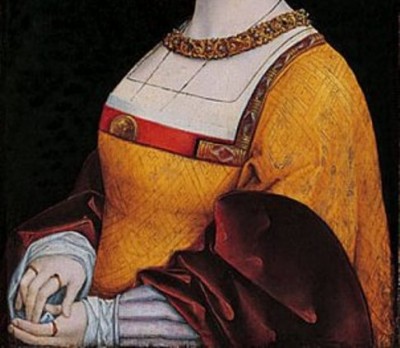
When Catherine was officially betrothed to Arthur Tudor, nobody knew that the infant Prince of Wales was not her fate. Nobody could imagine that she would be forced to live in poverty and uncertainty regarding her future in England after Arthur’s death.
The golden Spanish Princess was destined to marry Arthur’s younger brother Henry, who would become her“Sir Loyal Heart” and who later would expel her from the court, claiming that she never was his true wife. But all the above was beyond the knowledge of Ferdinand, Isabella, and Henry VII.

